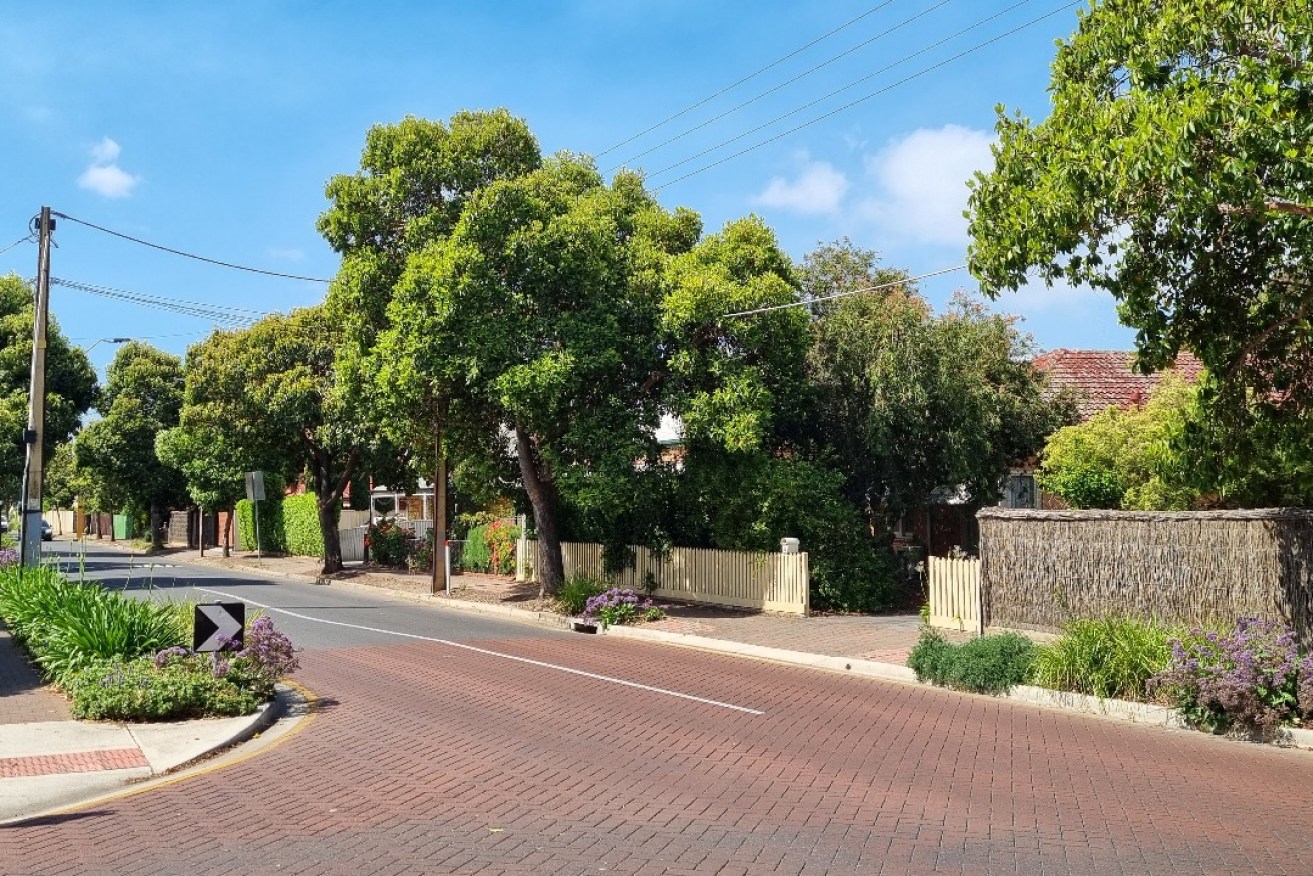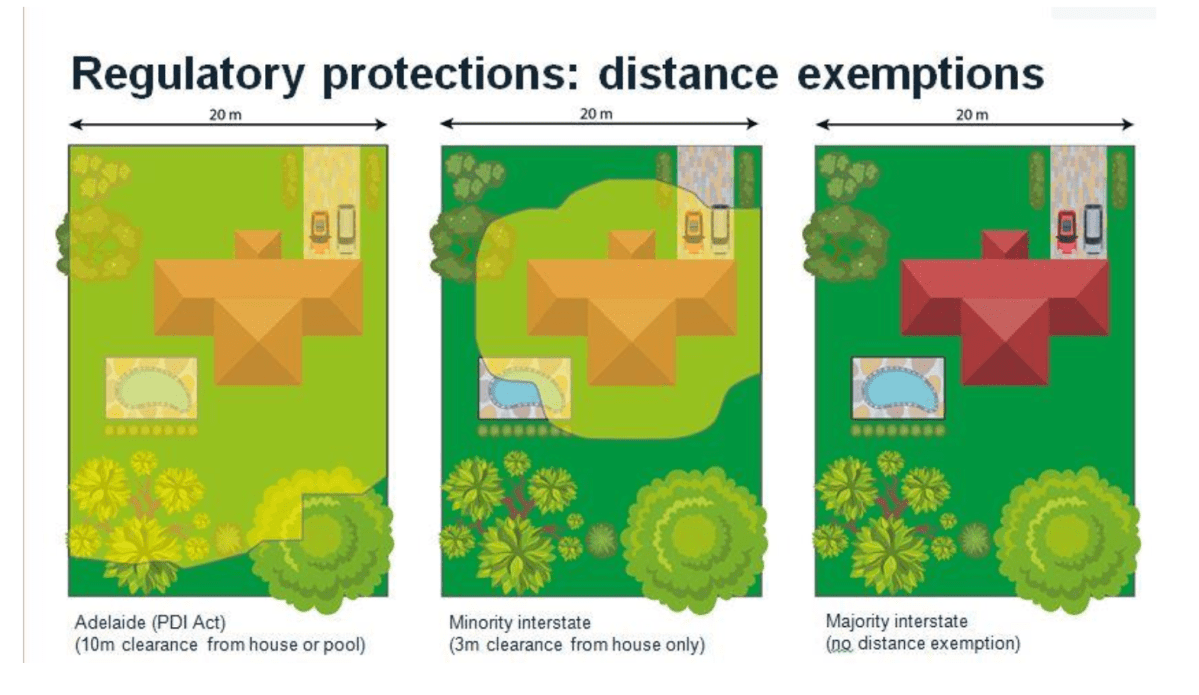Push to stop trees being axed near houses
A planning exemption allowing property owners to cut down a tree if it’s within 10 metres of a house should be repealed, a parliamentary inquiry has recommended.


Trees lining a street in the City of Unley. The council area has struggled with dwindling tree canopy. Photo: Thomas Kelsall/InDaily
Parliament’s Environment, Resources and Development Committee on Thursday tabled an interim report on its inquiry into Adelaide’s urban forest.
The inquiry was established last year to examine how to protect and increase Adelaide’s tree canopy amid ongoing concern about the felling of suburban trees for new housing developments and the impact of urban infill on suburbs.
Among the committee’s 13 interim recommendations is to remove an exemption created in 2011 whereby a developer can legally remove a tree if it is within 10 metres of a house or swimming pool.
The committee said applications for tree removal should be made “based on merit”.
“The committee have noted that the current exemption distance rules can be manipulated,” the report states.
“Developers may rely on the presence of a dwelling to remove a tree, despite their intention to clear the block and remove the dwelling immediately afterwards.
“This defeats the original purpose of the rule. The existing rule was designed to allow easy removal of trees in the event they threatened a home or swimming pool, but this purpose is void if the building (or pool) is removed or intended to be removed.”
Existing or imminent risk to property, infrastructure or people can still constitute “reasonable grounds” for tree removal under the reforms, the committee said.
The lack of “any alternative, achievable solutions” other than tree removal could also be cited as reasonable grounds.
Under the committee’s proposal, council assessment panels or the State Commission Assessment Panel (SCAP) would judge whether the tree felling is reasonable.
Tom Morrison, founder of conservation group 20-Metre Trees, said removing the 10-metre rule was “critical” to reducing “unnecessary loss of trees across our suburbs”.
“The 10-metre rule as it currently stands is really not found anywhere else across Australia when it comes to looking at our tree protections versus what they have interstate,” he said.
“And it’s probably, I think, the number one facilitator for the wholesale corner to corner block clearing that we’re seeing.”
Morrison said the rule was brought in as an asset protection measure while also reducing the workload on council assessment bodies.
“The downside to that, of course, is that we’re now hitting a stage where we’re losing significant amounts of tree canopy and that’s going to have a very long-term effect because it’s just not as easy to have new large trees established,” he said.
“I think they (the community as a whole) are more than happy to see councils resource this just given the importance of tree canopy in our suburbs.”

A diagram of the tree felling exemption at 10-metres, three-metres and one-metre. Image: Stefan Caddy-Retalic/University of Adelaide
But the recommendation has been criticised by the state’s development lobby, which argues putting tree removal applications back to local assessment bodies will slow down housing approvals.
Liam Golding, chief executive of the Urban Development Institute of Australia SA division, argued more focus should be put on offsetting the loss of trees by planting new trees.
“There is further risk to delays and cost impacts from the proposal to remove the 10 (metre) exemption as council approvals for every tree removal would require individual assessment as the removal of a significant tree is classified as development under the PDI (Planning Development and Infrastructure) Act,” Golding said.
“Given the statewide shortage of planners, this will further draw out timelines and costs for the industry which is crying out for houses to be built.
“A greater focus on the replacement model where removal of a tree is offset by the planting of trees would be a better approach and has a more direct contribution to sustaining the tree canopy.”
The urban forest inquiry also recommended substantially increasing fees for legal tree removals.
The fee for legally removing a regulated tree would increase from $326 to $3000 and for a significant tree from $489 to $4000.
Fines for the illegal removal of regulated and significant trees would be $30,000 and $40,000 respectively.
The committee determined that penalties for illegal tree felling “should significantly exceed the fines paid by those who legally remove trees after making a successful application”.
“The committee considers the current penalties are not commensurate with the severity of the offence in the eyes of the community,” the report states.
“The current penalties do not correspond to the value of the urban canopy, and therefore, do not serve as an effective deterrent.
“This is especially true for developers who stand to gain high returns from fully cleared blocks that they intend to redevelop: the current penalties are trifling in comparison with the profit they stand to gain.”
The funds raised from legal and illegal tree removals should go towards an urban forest fund that re-invests in tree canopy “proximate to the area” where tree felling has occurred.
Golding argued that a tenfold increase in legal tree removal fees “threatens to add significant cost to housing in the time of a housing affordability crisis”.
However, he said increasing penalties for illegal tree removal seems “sensible and appropriate”.
“Trees are a key part of attractive and healthy neighbourhoods,” he said.
“Directing funds collected back into planting more trees in appropriate locations is positive and supported as is greater transparency through reporting and research.”
Property Council SA executive director Bruce Djite raised concerns about the proposed fund, arguing: “At a time when the industry is already in a precarious position, we would also caution government against using the industry as a cash cow for the proposed Urban Forest Fund.”
The urban forest inquiry, chaired by Labor MP Jayne Stinson, has bi-partisan representation with three Labor MPs (Stinson, Emily Bourke and Erin Thompson), one Liberal MP (Michelle Lensink), one independent (Nick McBride) and one Greens MP (Tammy Franks).
The inquiry is set to continue into 2024, with future reports to address other tree regulation issues including the interaction of powerlines with tree canopy.




